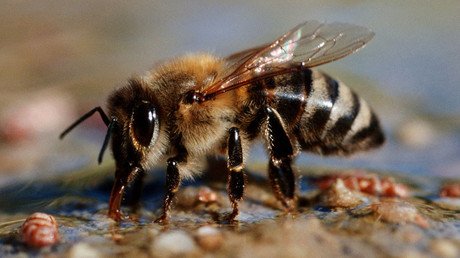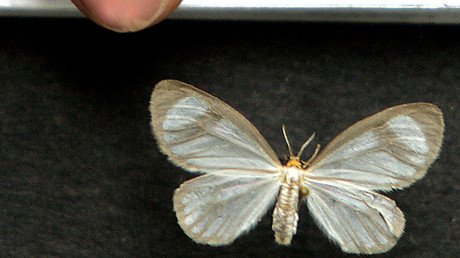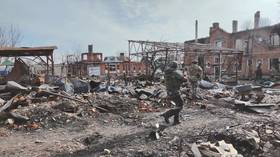Britain's urban butterfly population down 69% in 2 decades - study

Butterflies are disappearing more rapidly from British towns and cities than from the countryside, according to a new study taken over the last 20 years. The research blames a multitude of factors for the decline, including climate change.
The study, published in the May 2017 issue of journal Ecological Indicators, found that the number of urban butterflies fell by 69 percent over a 20 year period beginning in 1995, compared to a 45 percent decline in rural areas.
The study compared trends for 28 species in urban and countryside environments and found that 25 of those species had declined by more in city environments.
In particular, the research found that the Small Copper and Small Heath species suffered the biggest city declines.
The Small Heath's population fell by 78 percent in urban areas, compared to just 17 percent in the countryside. Small Copper numbers dropped by 75 percent in urban areas, compared to 23 percent in non-urban environments.
The study's authors said the causes are linked to a number of environmental pressures. Those include increased pollution, as well as “influences on habitat availability such as habitat loss and fragmentation due to development.” They also mention reductions in garden size, loss of brownfield land, and the heightened effects of climate change in cities.
Study co-author Professor Tom Brereton, head of monitoring at Butterfly Conservation, elaborated on the threats.
“Urban areas are under massive pressure. People are paving over gardens for drives or patios and putting more pesticides on their gardens per area than are put on farmland. Bigger gardens are being sold off for development and councils have less resources for managing green spaces,” he said, as quoted by the Guardian.
The study also found that city butterflies generally emerge two days earlier than their rural counterparts. The researchers said the likely cause is what is known as the “heat island effect,” meaning human activities make towns and cities warmer than surrounding rural areas.
“Warming is generally quite good for a lot of sun-loving butterfly species, but some species don’t like warm winters and warm springs and these effects are more pronounced in big cities,” Brereton said.
Brereton urged communities to “act now to ensure that we manage the environment to maintain the very things we cherish.”
The study examined data gathered on a weekly basis between April and September each year, by thousands of volunteers across Britain, under the UK Butterfly Monitoring Scheme.
“We used sophisticated statistical techniques to reveal that practically all butterfly species that we assessed were found to be struggling in urban areas, mostly likely due to the combined effects of habitat loss, climate changes and the intensification of land use,” said researcher Dr. Emily Dennis, from Butterfly Conservation and the University of Kent, as quoted by the Press Association.















